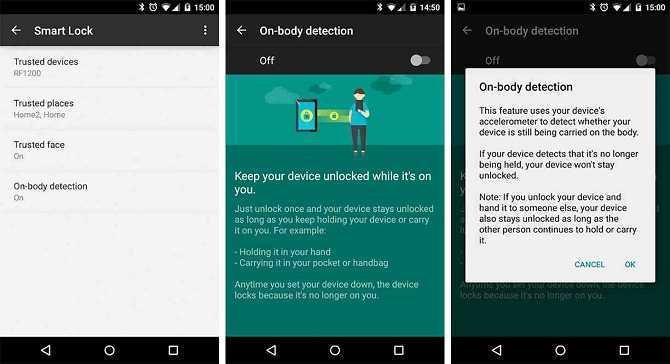Τι είναι το On-Body Detection; Με το Android 5.1, η Google φέρνει το νέο χαρακτηριστικό Device Protection, το οποία θα κλειδώνει χαμένες ή κλεμμένες συσκευές. Οι συσκευές θα παραμένουν κλειδωμένες μέχρι οι ιδιοκτήτες τους να συνδεθούν με τον λογαριασμό τους στο Google.
The characteristic security that Google uses is not new as Apple has been using it for a long time with “find my Phone”.
But Google seems to have enhanced this feature by inventing a new additional security feature. According to an Android publication Police, η Google διέθεσε μια νέα mode smart lock it calls “On-Body Detection.”
This feature uses an accelerometer inside the phone to figure out where the phone is in correspondence with your body. Is it in your pocket or somewhere away from you?
If the new feature detects that the phone is not near you, it will lock the device, preventing snoopers from getting your personal data.
The device will remain locked until you locate it and unlock it. It will remain unlocked as long as you hold it in your hand or in your pocket, but if you leave it on a table, it will lock again.
If you give the unlocked device to another person, it will remain unlocked because the system is not designed to recognize "you" and "the other". He can only understand if someone has it in his hand or in his pocket.
The source that revealed the information for the new feature used a Nexus 4 with Android 5.0.1, so On-Body Detection in fact it seems to be there not only on Android 5.1. The user also reported that the latest Play Services (7.0.97) was installed.





